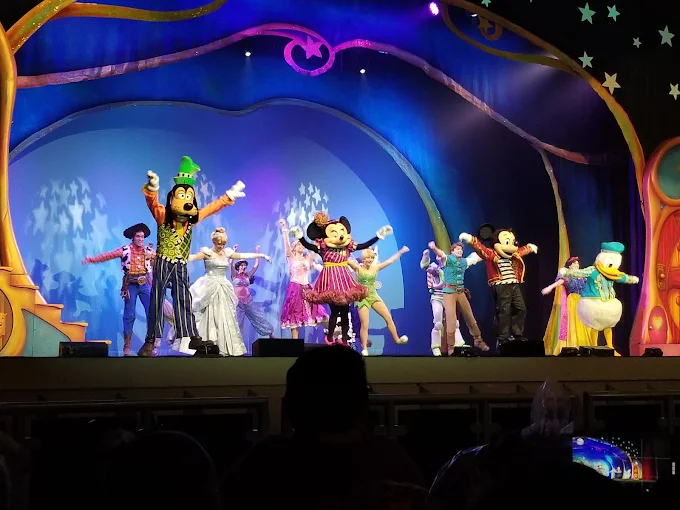





Picture this: you’re walking along the San Antonio Riverwalk on a warm evening, the gentle sound of water lapping against the stone walls, when suddenly you hear the faint melody of an opera drifting through the air. That’s probably coming from the Lila Cockrell Theatre, and trust me, it’s one of those moments that makes you fall in love with this city all over again.
I’ve been lucky enough to catch shows at the Lila Cockrell more times than I can count, and every single time, I’m reminded why this place is so special. It’s not just another theatre – it’s where San Antonio shows off its soul, where world-class art meets small-town charm, and where a night out can turn into a memory you’ll treasure forever.
The Woman Who Made It All Possible
Before we dive into the theatre itself, let’s talk about the incredible woman it’s named after. Lila Cockrell wasn’t just any mayor – she was THE mayor who changed everything. Back in 1975, when being a female politician was about as common as finding a parking spot downtown on a Friday night, Lila stepped up and became the first woman elected mayor of a major American city. Can you imagine the guts that took?
But here’s what I love most about her story: she didn’t just break barriers, she built bridges. Lila understood that a city without culture is like a body without a soul. She championed the arts, pushed for urban development that actually made sense, and always, always put the community first. When she passed away in 2019 at 97, the theatre that bears her name hosted both private services and public tributes. It felt right, you know? Like the building itself was saying goodbye to an old friend.
The Mayor Cockrell Room, tucked away in the Convention Center below the theatre, still honors her memory. Sometimes I’ll walk through there and think about how proud she’d be to see what her vision became.
A Theatre Born from Big Dreams
The story of how this theatre came to be is pretty wild when you think about it. Back in 1968, San Antonio was hosting the World’s Fair – HemisFair ’68 – and the whole city was buzzing with excitement. Imagine the ambition it took to say, “Hey, let’s show the world what we’re made of!” That fair transformed downtown San Antonio forever, and one of the best things it left behind was what would become the Henry B. González Convention Center complex, with our beloved theatre as its crown jewel.
Walking around that area today, you can still feel the energy of that moment when San Antonio decided to dream big. The Tower of the Americas, stretching 750 feet into the sky, still watches over the theatre like a protective older sibling. It’s a reminder that sometimes the most beautiful things come from the boldest visions.
More Than Just a Building
The first time I really looked at the Lila Cockrell Theatre – I mean really looked – I was struck by how it seems to grow right out of the Riverwalk itself. The architects didn’t just plop a building down and call it a day. They created something that feels like it belongs, like it’s been there forever, watching over the river and welcoming visitors with open arms.
The theatre’s lower level literally spills out onto the San Antonio River. I’ve been to events where you can step outside during intermission and find yourself right on the water. There’s something magical about sipping a drink while watching the river flow by, knowing that in a few minutes you’ll be back inside experiencing world-class entertainment.
Inside, the scale is impressive but not overwhelming. The stage is huge – 65 feet by 55 feet – which means productions can be as elaborate as they want to be. But somehow, it still feels intimate. I think that’s the secret sauce of great theatre design: making 2,536 people feel like they’re part of something special, not just lost in a crowd.
Where Every Seat Tells a Story
Here’s something I’ve learned from years of theatre-going: there’s no such thing as a bad seat at the Lila Cockrell. Seriously. The designers must have spent countless hours figuring out how to make every single person feel like they have the best view in the house. Whether you’re down in the orchestra section, up in the mezzanine, or way up in the balcony, you’re going to see and hear everything perfectly.
The chairs are actually comfortable too, which might sound like a small thing, but trust me, when you’re settling in for a three-hour opera, you’ll appreciate every extra inch of legroom. I’ve sat through performances where I completely forgot about the seat because I was so absorbed in what was happening on stage. That’s the mark of a well-designed theatre.
The three-level setup creates this wonderful sense of community. You can look around during intermission and see faces from all walks of life, all ages, all backgrounds, all sharing the same experience. It’s like a reminder that art really does bring people together.
The Magic of Live Performance
The San Antonio Opera has made the Lila Cockrell their home, and boy, do they know how to use the space. I remember seeing their production of “Romeo and Juliet” a while back, and I swear, the acoustics were so perfect that you could hear every whispered word, every subtle musical phrase. There’s something about live opera that just can’t be replicated – the way the voices fill the space, the way the orchestra becomes part of the story, the way the audience holds its breath during the most emotional moments.
But it’s not just opera that makes this place special. I’ve seen symphony concerts where the music seemed to lift right off the stage and wrap around the audience like a warm blanket. I’ve watched ballet performances where the dancers looked like they were floating. I’ve been to Broadway-style shows where the energy was so infectious that the whole audience was on their feet by the final curtain.
The thing about the Lila Cockrell is that it makes every performance feel important. The venue itself seems to say, “This matters. What’s happening here tonight matters.” And you know what? It does.
A Phoenix Rising
In 2010, the theatre got a major makeover, and let me tell you, it needed it. Don’t get me wrong – the place was beautiful, but after decades of use, it was showing its age. The renovation was like watching a beloved friend get a new lease on life.
They updated everything you can’t see but definitely notice when it’s not working right – the electrical systems, the mechanical systems, the fire safety equipment. More importantly, they made sure the theatre was accessible to everyone. New elevators, better handrails, accessible seating options – these aren’t just nice touches, they’re essential. Everyone deserves to experience the magic of live performance.
The lobby got a complete refresh too. The new lighting creates this wonderful ambiance that gets you excited for what’s coming. The restrooms were updated (and if you’ve ever been to an old theatre, you know how important good restrooms are). Even the dressing rooms got attention, because let’s face it, if the performers are comfortable, they’re going to give us a better show.
More Than Just Show Business
One thing that surprises people is how versatile the Lila Cockrell really is. Sure, it’s a theatre, but it’s also hosted some incredible non-performance events. I’ve been to corporate meetings where the setting made even the most mundane presentations feel important. I’ve attended award ceremonies where the winners looked like they were accepting Oscars.
The basement level renovation created these amazing spaces that feel like they’re part of the San Antonio River itself. The limestone veneers, the flowing design elements – it’s like they brought the river indoors. I’ve been to weddings down there where the bride and groom looked like they were getting married in a fairy tale.
This flexibility is part of what makes the theatre so valuable to San Antonio. It’s not just a place where tourists go to catch a show – it’s a working part of the city’s infrastructure, helping to bring in those 750,000 convention delegates every year. But it never loses its soul in the process.
The Ripple Effect
Living in San Antonio, you start to understand how important places like the Lila Cockrell really are. It’s not just about the performances themselves – it’s about what happens around them. People come downtown for a show, and they eat at our restaurants, they shop at our stores, they walk along our Riverwalk. They fall in love with our city.
But it’s more than just economics. The theatre gives local artists a world-class venue to showcase their work. I’ve seen community theatre groups use that stage and rise to the occasion, delivering performances that would make professional companies proud. There’s something about performing in a space that says “you matter” that brings out the best in people.
And for those of us who live here, it’s a source of pride. When friends from out of town come to visit, we take them to the Lila Cockrell. We want them to see what we see, to feel what we feel about this place we call home.
The Human Touch
You know what I love most about the Lila Cockrell? It’s the people. The ushers who greet you with genuine smiles, the bartenders who remember your intermission drink order, the ticket takers who make you feel like you’re arriving at a party. These aren’t just employees – they’re guardians of the experience.
I’ve watched kids attend their first opera and see their eyes light up during the overture. I’ve seen elderly couples holding hands during a romantic ballet, probably remembering their own first date decades ago. I’ve witnessed standing ovations that seemed to go on forever, not because the audience felt obligated, but because they were genuinely moved.
These are the moments that matter. These are the reasons why places like the Lila Cockrell Theatre exist – not just to house performances, but to create memories, to build connections, to remind us that we’re all part of something bigger than ourselves.
Looking to Tomorrow
As I think about the future of the Lila Cockrell Theatre, I’m excited about what’s coming. The recent renovations have set the stage, so to speak, for decades of incredible performances. The theatre is positioned to embrace new technologies while staying true to its mission of bringing people together through the arts.
The San Antonio Opera continues to call it home, and their programming keeps getting more adventurous and inclusive. But I’m also excited about the possibility of new partnerships, new art forms, new ways of using this incredible space.
What gives me the most hope is seeing young people discover the theatre for the first time. In a world of screens and streaming, there’s something irreplaceable about live performance. The Lila Cockrell provides that experience in a setting that makes it feel special, important, memorable.
More Than Bricks and Mortar
At the end of the day, the Lila Cockrell Theatre is more than just a building. It’s a testament to what happens when a community decides that art matters, that culture matters, that bringing people together matters. It’s named after a woman who understood that great cities invest in more than just roads and buildings – they invest in the human spirit.
Every time I walk into that theatre, I’m reminded of why I love San Antonio. It’s not just the beautiful architecture or the perfect acoustics or the comfortable seats. It’s the feeling that I’m part of something special, something that connects me to my neighbors, to visitors from around the world, to the performers on stage, and to the dreams of everyone who helped make this place possible.
The next time you’re in San Antonio, do yourself a favor and catch a show at the Lila Cockrell Theatre. Don’t just go for the performance – go for the experience. Go to feel connected to something bigger than yourself. Go to understand why this place has captured the hearts of so many people for so many years.
Because that’s what great theatres do. They don’t just entertain us – they transform us, one performance at a time, one audience at a time, one magical evening at a time. And the Lila Cockrell Theatre? It’s been transforming San Antonio, and everyone who walks through its doors, for over fifty years.
That’s a pretty incredible legacy, don’t you think?
